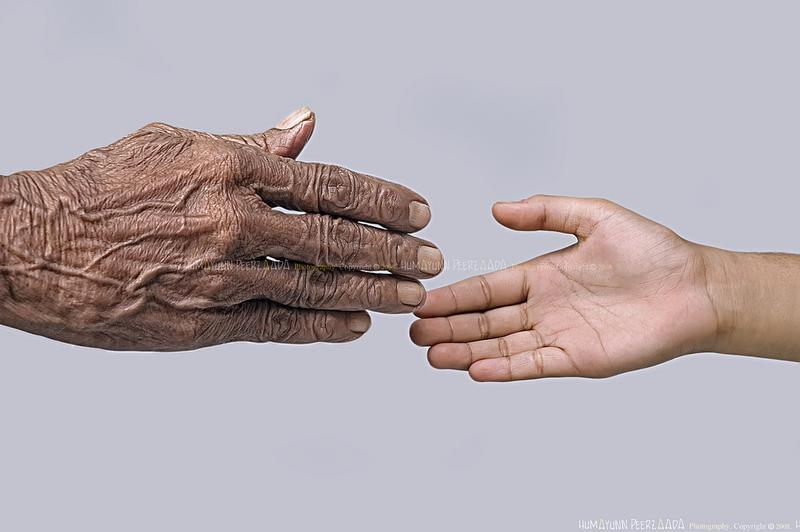
Last December, 67-year-old Pat McGinnis was busy pursuing her usual round of activities: auditioning for stage roles, teaching classes in the Alexander Technique, taking the subway around Manhattan. She even ventured out into a snowstorm to meet friends for drinks. Four months later, the first dramatic symptoms of a degenerative brain condition called Creutzfeldt-Jakob disease kicked in. It caused her to wander from door to door along her block on the Upper West Side, where she'd lived for more than 40 years. She couldn't get home, she later explained to her niece Kirsten, because "my building disappeared."
Kirsten McGinnis also recalled a second incident, some months later, in which her aunt went missing and ended up in a subway station 50 blocks from her home. It was winter and she was wearing clothes too light for the season. She had no idea how she'd gotten there. McGinnis described the hours between her aunt's disappearance and the news that NYPD officers had found her as "the scariest night of my life." Her Aunt Pat was returned to her nursing home — she was unable to live independently at this point — but with bruises to her chin, nose and neck, most likely from a hard fall onto her face.
Scares like that one are becoming more common in New York as demographic trends combine to make the problem of missing seniors more acute. City officials have adapted with notification systems such as "Silver Alerts" that get the word out early in an emergency, but they sometimes struggle to keep up with all the seniors who go astray.
New York keeps growing grayer. The 2010 U.S. Census reported that the city's 85-plus population had grown at a hefty 16 percent over the previous 10 years — and residents aged 60 to 64 had expanded at twice that rate. Based on such data, the city Department of Aging predicted in 2010 that "This trend will continue in the years ahead as baby boomers age."
That has proven true. City Comptroller Scott Stringer's recent report on aging in New York says 65-and-older is the city's fastest growing group by a large margin. The report projects that by 2040 New York will be home to a record 1.4 million seniors. That probably means an increasing number of public episodes like the one Pat McGinnis endured.
Jed Levine, vice president of the Alzheimer's support group CaringKind, recalled that when he was starting out as a social worker in the 1990s, the police didn't always search for missing seniors. He summed up the policy as, "Unless there was some kind of criminal activity, there was no basis to investigate."
Over the years the policy has changed, spurred in part by the case of an elderly man with dementia who got lost in Upper Manhattan and wound up dead beneath the George Washington Bridge. Today, Caringkind is one of a number of organizations notified by the police when a New York City resident with a cognitive deficiency goes missing. CaringKind in turn sends out a description to its professional networks and social media feeds. Captain Stephen Wren of the NYPD Detectives Bureau said the department has also developed a standard procedure for scrambling resources when a senior can't make it home, often because the person don't know where home is. "We'll have detective squad response and we'll have mobilizations of police officers that help us look for the person," he said.
But that doesn't always work. If the senior is still lost after several hours, the NYPD turns to the public for help in the form of Silver Alerts.
#SilverAlert Pablo Rivera M/H/67, 5'4"/170lbs, w/ dementia from Fulton Ave & E. 169th St, MN. Seen? Call 9-1-1. pic.twitter.com/VERW9I1aJd
— NYCEM - Notify NYC (@NotifyNYC) June 15, 2017
To send out a Silver Alert, the police first contact the city's Office of Emergency Management to provide them with a physical description of the missing senior along with a photo, a list of medical concerns and the location where they were last seen. OEM turns the information into a Silver Alert that is then tweeted, posted to Facebook and emailed or texted to subscribers of its Notify NYC public safety program. (Sign up here.) Over the last three years, the Office of Emergency Management has sent out an average of 155 Silver Alerts per year — significantly higher than the 21 alerts of 2010, the program's first year of operation.
Captain Wren claimed that the vast majority of Silver Alerts result in the person being found. The statement couldn't be independently verified because the NYPD seldom lets the public know about the outcome of cases, and declined to provide that information on request. Jed Levine of CaringKind said his organization doesn't hear about every case from NYPD but, of those he knows about from this year, all had ended well.
WNYC crunched the numbers on 45 Silver Alerts in 2017 and noticed some patterns. Twenty-five of those seniors were last seen in Brooklyn, and 20 of the alerts were for African Americans, the group most likely to go missing. Hispanics were second with 14 alerts. There is an underlying basis for such results: African American seniors are twice as likely to suffer from Alzheimer's Disease as whites. Hispanics are 1.5 times more likely.
At the same time, the percentage of African Americans and Hispanics among the city's elderly population is on the rise. Add those factors to the graying of New York in general and you wind up with the likelihood that the problem of missing seniors is likely to grow worse.
NYPD now offers tips for friends and family of a senior who might be at risk of going missing in the city, among them:
- Keep a recent photo of the senior. (A youthful wedding picture won't be very helpful.)
- Make a note of the clothes they are wearing each day, to give an accurate description to the police.
- Write down the senior's Metrocard number. The police can track them if they take mass transit.
- Have them wear a Medic Alert bracelet with vital information: name, address, medical issues, emergency contact.

